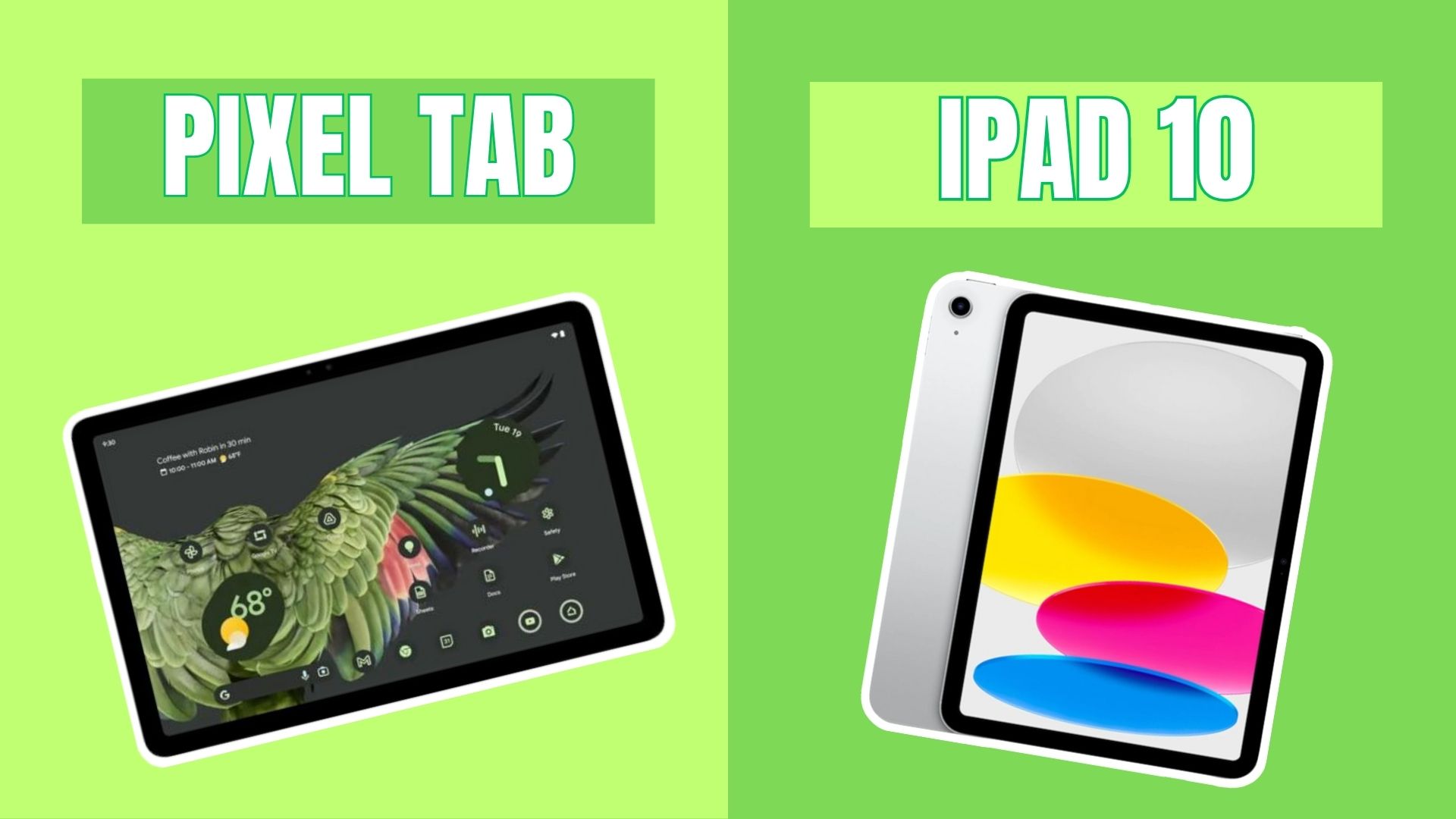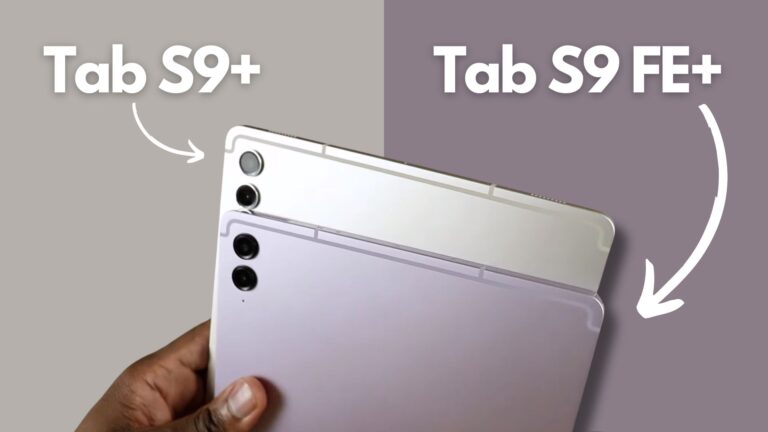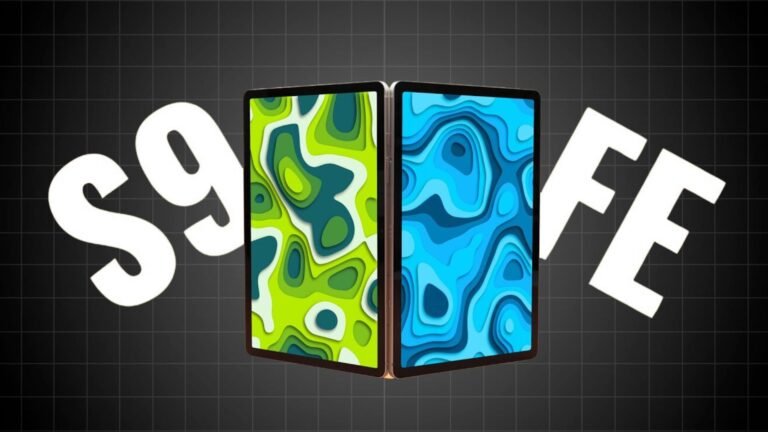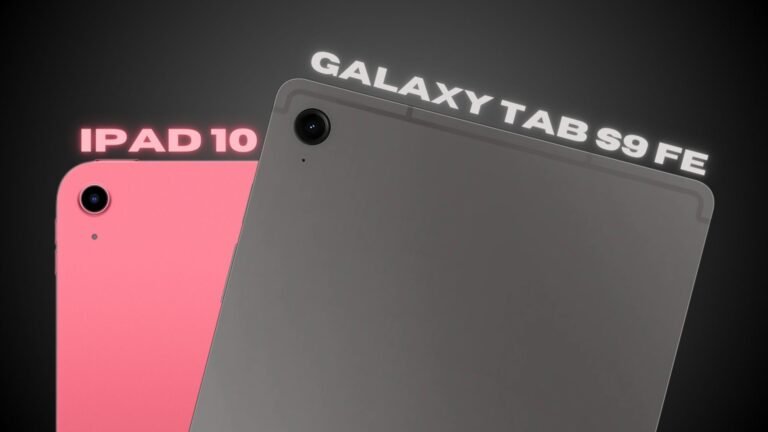I have been using the iPad 10 and Pixel Tablet for the past week for gaming, browsing the web, watching videos, social media, and office work. Can the Pixel Tablet compete with the iPad 10, considering there is only a $50 difference between the two tablets?
- Pixel Tablet vs iPad 10: Specifications
- Pixel Tablet vs iPad 10: Design
- Pixel Tablet vs iPad 10: Display
- Pixel Tablet vs iPad 10: Speakers
- Pixel Tablet vs iPad 10: Accessories
- Pixel Tablet vs iPad 10: Camera
- Pixel Tablet vs iPad 10: Performance
- Pixel Tablet vs iPad 10: Battery Life
- Pixel Tablet vs iPad 10: Price & Storage
- Pixel Tablet vs iPad 10: Conclusion
Pixel Tablet vs iPad 10: Specifications
| Pixel Tablet | iPad 10 | |
| Storage | 128GB or 256GB UFS 3.1 | 64GB, 256GB |
|---|---|---|
| CPU | Tensor G2 | Apple A14 Bionic |
| Memory | 8GB LPDDR5 | 4GB RAM |
| Operating System | Android 13 | iPadOS 16 |
| Battery | 27Wh | 28.6 Wh lithium‑polymer |
| Ports | USB Type-C 3.2 Gen 1 | USB-C |
| Camera (Rear, Front) | 8MP f/2.0, 8MP f/2.0 | 12 MP f/1.8, 12 MP f/2.4 |
| Display (Size, Resolution) | 10.95-inch 2560x1600p 60Hz LCD | 10.9-inch LCD, 2360 x 1640 pixels, 60Hz, 500 nits |
| Price | $499 | $449 (64GB), $599 (256GB) |
| Size | 10.2×6.7×0.3 inches (258x169x8.1mm), 17.4 ounces (493g) | 9.79 x 7.07 x 0.28 inches (248.6 x 179.5 x 7mm) |
| Connectivity | Wi-Fi 6, Bluetooth 5.2, UWB | Wi-Fi 6 (802.11ax) with 2×2 MIMO |
| Colors | Hazel, Rose, Porcelain | Silver, Blue, Pink, Yellow |
Pixel Tablet vs iPad 10: Design

It can be easily seen that there is a overall design difference between the two tablets. So, let’s talk about the iPad 10 first, which features the same rounded corners and squared-off edges that are found in most iPad models these days. You must already be familiar with the design of the iPad 9, as it shares the same design as the Pixel Tablet, with those rounded corners.
Both tablets have a strong build as their backs and frames are made of aluminum. However, the Pixel tablet has a special feature called nano-ceramic coating, which makes the tablet comfortable to hold and also rejects fingerprints.
Now, if we talk about the size, both tablets appear to be the same, but according to the spec sheet, the Pixel tablet is slightly longer and narrower.
Both tablets have a fingerprint sensor, which is integrated into the power button on both devices, and I didn’t face any issues with either of them. But one thing I would like to mention is that the user experience of the Pixel tablet is better because you can simply place your finger on the fingerprint sensor to unlock it, whereas with the iPad 10, you first have to press the power button and then use the fingerprint sensor to unlock it.
Pixel Tablet vs iPad 10: Display

Now, speaking of the display, both tablets have a 60Hz LCD display. The Pixel tablet is slightly larger and has a higher resolution and pixel density. If you use them in direct sunlight, you will have a similar experience since both offer a brightness of 500 NITS.
The bezel size is almost the same for both displays, and they both support 16.7 million colors. However, if you are really keen on pixel peeping, the Pixel tablet is slightly sharper, and it offers two color modes: Natural and Adaptive.
The aspect ratio differs between the two tablets. The iPad 10 has a 3:2 aspect ratio, while the Pixel tablet has a 16:10 aspect ratio. When watching movies or videos, the Pixel Tablet will fill a bit more of the display, reducing the black bars.
Overall, both displays lack high-end features such as a 120Hz adaptive refresh rate or OLED/Liquid Retina XDR displays. However, considering the price at which these tablets are available, both displays are excellent for web surfing, productivity, social media, content viewing, and gaming.
One more important difference is that the Pixel tablet has a laminated display, meaning the touch layer and cover glass are fused together. On the other hand, the iPad 10 has a non-laminated display, which means you may notice a slight air gap between the touch layer and cover glass. However, you won’t notice this difference unless you pay close attention to it.
Pixel Tablet vs iPad 10: Speakers
Both tablets indeed have four speaker grills visible. However, the Pixel tablet is better in this aspect as it offers four speakers, whereas the iPad 10 has only two speakers.
Both tablets belong to the mid-range segment, so neither of them has exceptional audio quality. However, the Pixel tablet has slightly better sound quality due to improved clarity. If you prefer music with more bass, then the iPad may be more suitable for you. However, purchasing a tablet solely for music listening is not a common practice, so I don’t consider this factor to be highly significant.
The location of the speakers also plays an important role, and this is where the iPad has a downside. When you are watching movies or playing games in landscape mode, your hands can cover the speakers, resulting in slightly muffled sound. On the other hand, the Pixel tablet has four speakers that are not obstructed by your hands, providing a better sound experience.
If you prefer using headphones, both tablets do not have a 3.5mm headphone jack. You will need to use a USB-C adapter or opt for wireless headphones.
Pixel Tablet vs iPad 10: Accessories

Due to the laminated display on the Pixel tablet, the stylus works well, and it feels like you’re directly painting on the glass surface. On the other hand, when using a stylus on the iPad 10, you may notice a separation between the tip of the pencil and the content being created.
Both tablets require you to purchase a stylus separately. The iPad 10 supports the 1st generation Apple Pencil, priced at $100. The Pixel tablet is compatible with the USI 2.0 stylus, which I found for around $60.

Regarding keyboard cases, the iPad 10 supports the Magic Keyboard Folio, which is of high quality with good keys and a trackpad. However, it comes at a hefty price of $250, which is quite expensive considering it’s for a budget tablet. Instead, I would recommend using a budget-friendly Bluetooth keyboard and mouse.

On the other hand, the Pixel tablet does not come with a keyboard. However, Google has launched a new accessory called the Charging Speaker Dock. It wirelessly charges the tablet, elevates it off your desk, provides a comfortable viewing angle, and acts as a speaker when the tablet is docked, offering an enhanced audio experience.
Pixel Tablet vs iPad 10: Camera
Moving on to the camera system, the Pixel has a very basic camera system with an 8MP front facing camera and an 8MP rear facing camera, both of which offer 1080P 30FPS.
The iPad 10 has a more advanced camera system. We’re getting a higher resolution 12MP rear facing camera, which can record it up to 4K 60 FPS, and a 12MP front facing camera. So ultimately, if you use your tablet camera these are important advantages.
One thing I liked about the Pixel tablet is that its camera app offers some great features. For example, it has Photo Unblur, which uses AI to sharpen images and improve their clarity. Additionally, there is the Magic Eraser feature, which helps remove unwanted objects from your pictures.
Pixel Tablet vs iPad 10: Performance
The iPad 10 comes with 4GB of RAM and an A14 Bionic chip, while the Pixel Tablet comes with 8GB of RAM and a Tensor G2 chip. Let’s take a look at some benchmarks.

The iPad 10 surpasses the Pixel Tablet in terms of single-core and multi-core performance, and this gap widens even further when comparing GPU performance.
Now, speaking of overall performance, I didn’t notice much difference between the two tablets. Apps opened quickly, and multitasking didn’t pose any issues. Both tablets performed similarly, but I would lean towards the iPad because it is more powerful according to the benchmarks, making it more future proof.
I have always appreciated one aspect of Apple, which is long-term software updates. Therefore, it was great to see Google offering at least five years of security and software updates for the Pixel Tablet.
When we look at gaming, in most cases the games themselves worked very well in both tablets. Asphalt nine worked really well. The graphics looked great on both tablets and gameplay was smooth. And even more demanding games like PUBG, Genshin Impact were playable.
Pixel Tablet vs iPad 10: Battery Life
Both tablets have similar battery life, with only a slight difference. The iPad is rated for 10 hours, while the Pixel Tablet is rated for 12 hours. Based on my experience over the past few weeks, I would give a slight edge to the Pixel Tablet in terms of battery life.
Regarding charging, neither tablet comes with a charging adapter included, and both support USB-C. If you purchase the Pixel Charging Speaker Dock, it does come with a charger, but it’s not USB-C, so you cannot use it to speed up charging directly on the tablet itself.
Pixel Tablet vs iPad 10: Price & Storage
Pricing is indeed important as it can save you a significant amount of money. The iPad 10 is priced at $449, while the Pixel Tablet is priced at $499 with the charging speaker dock.
Now, the issue is that the iPad 10 comes with 64GB of storage, while the Pixel Tablet starts with 128GB of storage. Having only 64GB of storage in 2023 is quite limited. For instance, if you install a game like Genshin Impact, it alone takes up around 24GB of storage. Additionally, the iPad 10 does not have a 128GB storage option, so you would need to go directly for the 256GB model, which is $150 more expensive.
Pixel Tablet vs iPad 10: Conclusion
The iPad 10 is a better choice if you prefer a more modern design with vibrant colors, a more powerful chip, an aspect ratio conducive to handwritten notetaking, a superior camera system, the option for a keyboard case, advanced multitasking capabilities, enhanced gaming performance, or if you require cellular connectivity.
On the other hand, if you value the practicality of a charging speaker dock, a slightly better fully laminated display, the dual functionality of a Smart Hub, slightly improved battery life, and the versatility of multi-users, then the Pixel Tablet would be a suitable option for you.






